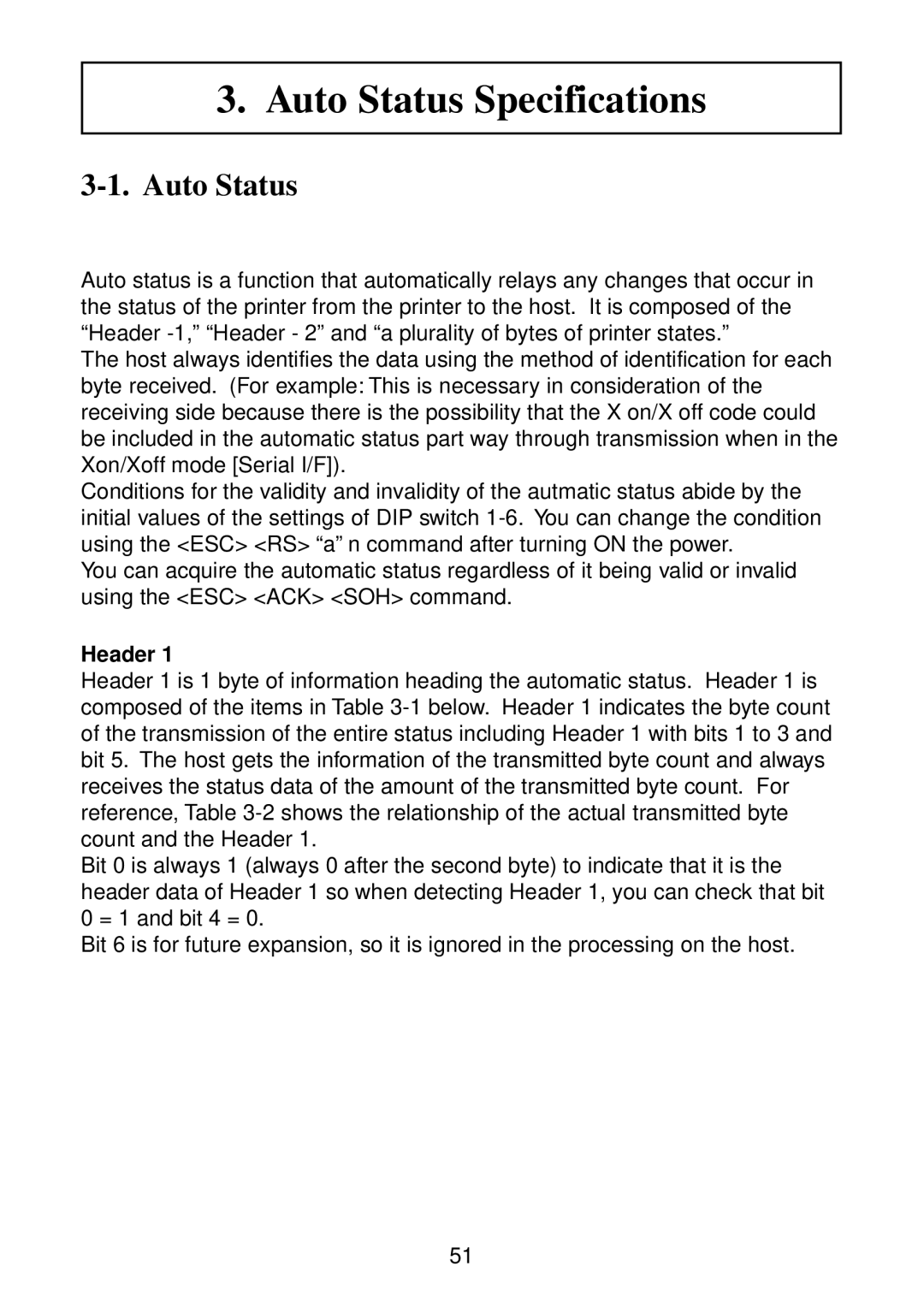3. Auto Status Specifications
3-1. Auto Status
Auto status is a function that automatically relays any changes that occur in the status of the printer from the printer to the host. It is composed of the “Header
The host always identifies the data using the method of identification for each byte received. (For example: This is necessary in consideration of the receiving side because there is the possibility that the X on/X off code could be included in the automatic status part way through transmission when in the Xon/Xoff mode [Serial I/F]).
Conditions for the validity and invalidity of the autmatic status abide by the initial values of the settings of DIP switch
You can acquire the automatic status regardless of it being valid or invalid using the <ESC> <ACK> <SOH> command.
Header 1
Header 1 is 1 byte of information heading the automatic status. Header 1 is composed of the items in Table
Bit 0 is always 1 (always 0 after the second byte) to indicate that it is the header data of Header 1 so when detecting Header 1, you can check that bit 0 = 1 and bit 4 = 0.
Bit 6 is for future expansion, so it is ignored in the processing on the host.
51
